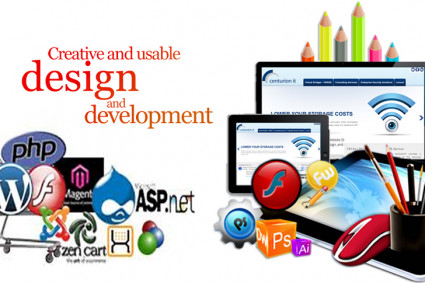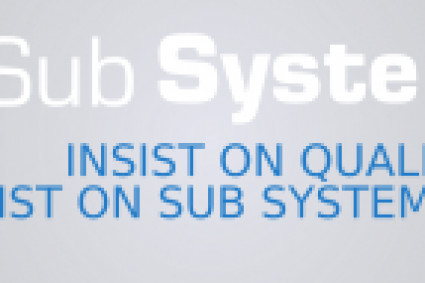
An entire team must be able to work together toward a shared objective and communicate clearly and effectively as a unit. Despite the fact that collaboration is frequently cited as a crucial success factor, the tactics that actually help the product team advance are not given enough attention.
The 5 crucial collaboration techniques that actually work
The components of collaboration can be divided into two groups:
establishing and preserving relationships
task completion and goal accomplishment
The main strategies and methods that will help your organization's team management the most are listed below.
1. Foster an environment where innovative ideas are rewarded.
Everyone has concepts. Although most of them are never heard, some of them are good and some of them are bad.
You need a company culture and an internal environment that welcome new ideas if you want to make sure you're creating the best product possible that will solve precisely the right problems for your customers. You can implement the best ideas and give credit to the authors while rewarding the best contributors. However, avoid criticizing (and discouraging) colleagues who may have contributed a subpar idea.
Your team should be able to make suggestions and offer feedback on others' ideas without worrying about being judged in a productive collaborative setting. Implementing excellent suggestions made by your team is a great way to increase inclusiveness, a sense of ownership, and a willingness to work toward the best outcomes, especially if they result from cross-functional organizational-wide collaboration.
Encourage your team to think creatively in order to establish this kind of environment. Although it has become cliche, your team can actually benefit greatly from shifting your perspective and coming up with less obvious solutions.
It's difficult to disengage from our cognitive biases, pre-built agendas, and widespread misconceptions, so you can begin by assembling your team and returning to the fundamentals of creative problem solving.
In the well-known lateral thinking exercise known as the "Nine-Dot Problem," participants are given a grid of nine dots that is three by three. Without taking the pencil away from the paper, the goal is to join all nine dots together using the fewest amount of straight lines.
To generate as many ideas as you can, hold a brainstorming session. Naturally, don't end with the Nine-Dot Puzzle. When you can, set up creative brainstorming sessions because that is where collaboration and visual communication are most effective.
Another approach might be to encourage the team to take initiative and put ideas into practice outside of a group setting, which would give each member more freedom and responsibility.
This emphasizes the importance of your ability to communicate and give feedback without offending anyone if the suggestion turns out to be bad.
In either case, being receptive to new ideas is a great strategy for fostering teamwork and elevating communication within the product team.
2. Encourage open communication and truthful criticism.
In any team setting, whether in SaaS, startups, or enterprise-level corporations, open communication is a crucial component. It's an important element that checks the boxes for fostering relationships and achieving objectives at the same time.
Everyone can have their say, feel like they can contribute to the team, solve problems successfully, and adapt to changes better when there is open communication. Along with fostering an environment where ideas can flow freely, it also gives the team the confidence to speak their minds.
There won't be any insider information, no one will be left out of the loop, and nobody will feel threatened by what another team member has to say if there is a culture of honest feedback. To complete the circle, truthful criticism also promotes openness, which results in more creative thinking, greater engagement, and deeper conversations.
Feedback is given to team members in all directions, including from managers to team members and vice versa. Whether it is constructive or positive, it must be honest. The best piece of advice is to be honest and say what needs to be said.
And once again, improving collaboration techniques will help deliver feedback without the recipient putting up a fight or taking it personally. You might even think about making training videos that anyone can watch when providing feedback that can be useful to many people. This gives the impression that providing feedback is training, not personalized.
Silos should be broken down, and teams from different parts of your organization should work together, rather than just managing your team vertically. The potential for diversity, better product decisions, and new forms of collaboration will increase when working in cross-functional teams.
3. Set specific objectives and understand what to expect from them
When developing and launching a SaaS product, there is a lot of work to be done, but it can be challenging to get results when everyone is working on their own projects. In such a situation, everyone is constantly pressed for time, ideas are spread quickly, and a variety of product management software, marketing tools, and growth strategies are being used.
This can lead to disagreements and confusion on the team, but if you want a team that gets things done, you only need to adhere to a few basic guidelines:
Establish precise objectives so that everyone on your team is aware of what they are working on and why. For this, you can, for instance, use the SMART goals framework. Always try to include a bigger picture to show how the business strategy and product goals are compatible.
Establish deadlines for tasks and make sure that everyone on the team is aware of them. This prevents unpleasant surprises in the future. A flexible product roadmap is the way to go, so be sure to account for potential changes along the way.
Clarify your expectations: So that there are no surprises, make sure that everyone on your team is aware of their specific roles and responsibilities.
To be honest, if you put yourself in a teammate's position with unclear goals, you can see how difficult it would be to be productive or motivated to complete a task. This is particularly true for organizations with thousands of employees, but it can also give SaaS companies and startups an advantage.
A new level of teamwork can be achieved when everyone on the team can see and feel how their work is improving the user experience of the product.
4. To advance, involve everyone in problem-solving.
Working with someone who isn't contributing can be very annoying. Not only someone who is not performing their duties properly, but also someone who is not assisting the team in problem-solving and advancing the entire product.
This poses a serious threat to the work of the entire product team, which is in charge of developing and delivering a product to customers. For instance, you might be working with a group of individuals who are all completing their tasks independently of one another. Or perhaps only one or two people are actively working to solve product-related issues while others are not.
Once you have a collaborative team ready to contribute to problem-solving, strive for advancement, and ultimately launch the best product to customers, you have a product team that is not afraid to pitch new ideas, openly discuss challenges, give and receive honest feedback, and work towards clearly defined goals.
Again, this is a situation in which brainstorming sessions can be very beneficial. Use Atlassian's Problem Framing Playbook to gain a deeper understanding of the issue you're trying to solve. Here is an illustration of what it might resemble.
5. Create a win-win situation to accomplish the objectives.
If you've read this far, you already know that each of these tactics works in synergy with the others. And this last strategy completes the picture.
You'll lay the foundation for a successful collaborative experience when you establish clearly defined goals that are not only a huge win for the business and your customers, but also have some win for the team.
What would be an example of a win-win scenario? when every member of the product team is invested in the product you're creating, either through their own ideas that were implemented or through their work that has meaningfully influenced the final product.
And if you're in charge of a remote team, here's a summary of the essential tactics.
A Summary
If you're in charge of a product team, you understand how crucial it is to have a strong support system. It's up to you to lead and mentor your team while also ensuring that everyone is fully committed to the project and fired up to finish the tasks at hand.
Additionally, if you're an active team member, sharing your suggestions with the interim manager can be a great way to create a more productive working environment.
In any case, I hope this article gave you some useful teamwork techniques you can use right away to enhance teamwork!






